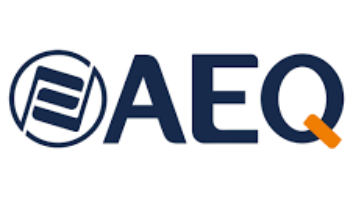
Alexander Zink is senior
business development manager
for Fraunhofer IIS
GUEST COMMENTARY
ERLANGEN, Germany — Today, mobile music streaming services are facing a series of challenges.
Service providers are suffering due to the inability to serve the full range of potential customers because of real-world bandwidth limitations combined with a high playout/CDN cost. In addition, today’s mobile user experience is far from perfect. Streaming services are eating into consumers’ monthly data allowances and service reliability is far from what we have grown to appreciate from classic broadcast coverage.
SOLUTION
However, there is an answer. Recently, the MPEG working group in ISO standardized and published the latest member of the highly successful AAC family of audio codecs, “xHE-AAC” (Extended High-Efficiency Advanced Audio Coding).
xHE-AAC combines and significantly improves the functionality of two formerly separated worlds: On the one hand the general-purpose audio codecs and in particular today’s de-facto standard MPEG HE-AAC (v2), on the other hand codecs for speech-only content at very low bit rates represented by AMR-WB+.
xHE-AAC has the ability to provide good quality audio down to 8 kbps for mono and 16 kbps for stereo services regardless of the type of content (e.g. talk radio, a music program or a jingle).

xHE-AAC capable audio decoders are backward compatible to all the
other members of the successful AAC family of audio codecs.
Even in the mid-bit rate range, xHE-AAC shows significant quality improvements over established codecs, while for higher bit rates it converges to the same transparent quality known from the other members of the AAC family. This combination of unique qualities makes xHE-AAC the general audio codec of choice for any future music streaming service, as well as Digital Radio Mondiale (DRM).
FOR DIGITAL RADIO MONDIALE
Due to its universality, the global DRM digital radio standard has adopted MPEG xHE-AAC as its primary audio codec.
This allows for completely new broadcast scenarios as xHE-AAC enables multiple FM-quality radio transmissions on a single medium wave channel or up to three stereo audio services in less than half the spectrum required for a single analog FM transmission.
India is on the verge of becoming the world’s largest digital radio deployment. In February 2016, attendees at Broadcast Engineering Society of India Convention in New Delhi witnessed the first DRM transmission based on xHE-AAC by India’s public broadcaster All India Radio.
DRM ready receiver chipsets and receivers support xHE-AAC out of the box, as well as all providers of professional DRM encoders and multiplexers.

A qualitative comparison of perceptual audio quality achievable
by each member of the AAC family of audio codecs.
FOR IP-BASED AUDIO STREAMING
For audio streaming over IP to mobile devices, xHE-AAC promises a revolutionary impact on both user experience and business opportunities. Streaming service providers for the first time can now start targeting potential customers limited by affordable 2G contracts who so far could not be served using existing audio codecs — but in the case of India represent roughly 90 percent of mobile users.
Consumers with 4G/LTE contracts around the world benefit from the increase in service reliability when leaving the well-covered city centers and falling back to 2G-coverage, or joining mass events with plenty of mobile data usage: Instead of suffering from a sequence of annoying drop-outs and service interruptions, customers of xHE-AAC enabled services have a much higher chance of enjoying a continuous service experience.
In addition, worry-free listening to mobile streaming services is a reality — even with limited data plans. For example, an entry-level data plan of 500 MB/month – if fully used for audio streaming — allows for just 17 minutes of daily consumption with a typical mp3 stream at 128 kbps, but more than two hours (138 minutes) with xHE‑AAC at 16 kbps.
Service providers can benefit from a dramatic cut in monthly costs of data distribution. Sample calculations for mid-size services show a saving potential of 75 percent of the CDN cost once mobile apps start requesting the low bit rate xHE-AAC streams instead of the mp3 and HE-AAC versions.

The daily number of minutes a consumer can enjoy mobile streaming services
if a 500 MB monthly data plan can be spent exclusively for this purpose.
WORLDWIDE ADOPTION
In April, Via Licensing announced the start of the official xHE‑AAC licensing program, which includes the functionality of the existing AAC program. This makes up for the fact that xHE-AAC capable audio decoders are downward compatible to all existing AAC based content. The licensing program also makes it more convenient for manufacturers to mix xHE-AAC and AAC-only devices and apps.
After conducting a sophisticated comparative study of modern audio codecs, National Public Radio (NPR), the public radio service in the United States and the country’s biggest provider of streaming and podcast services, declared xHE-AAC as its recommended codec for future streaming services.
Major North American, South American, European and Asian service providers are working toward integrating xHE-AAC into their server platforms and apps. That said, companies providing professional streaming encoder equipment such as Omnia/Telos and StreamS/Modulation Index have upgraded their solutions with full support of xHE-AAC as demonstrated at IBC2015 in Amsterdam and NAB Show 2016 in Las Vegas.
Finally, the first available Android, iOS and FireOS mobile apps showcase and prove the power of xHE‑AAC based on a live streaming experience.
We are truly witnessing a revolution of user experience and business opportunities for mobile streaming and digital radio services as the market availability of MPEG xHE-AAC continues to grow.
Alexander Zink is senior business development manager for Fraunhofer IIS.
Radio World welcomes other points of view. Please send comments to [email protected].











